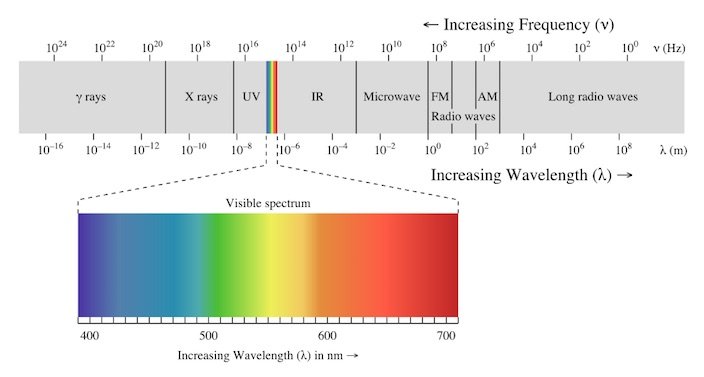Why Do We See Green?
We may grumble about the rain but its one of the reasons Ireland has a vibrant green landscape earning it the name of the Emerald Isle. The North Atlantic drift keeps the climate temperate, offloads a lot of rain and keeps our vegetation varied and lush. Beyond this however I wondered why there are so many shades of green and endeavoured to find out. Why don’t we speak of shades of red or blue? (Fifty shades of grey of course is an entirely a different matter). The answer is science!
Visible light is really electromagnetic radiation with wavelengths between infrared and ultraviolet. Objects absorb varying amounts of light radiation and anything which is not absorbed reflects back off the object and is interpreted by our eyes as the different hues of green and other colours. Saturation and intensity also play a role in the different appearances of green. Every photographer knows that the amount of ambient light drastically changes a subject. In certain light conditions the same plant can appear a brighter or a darker shade. The plant itself may not have changed composition but the difference in sunlight or artificial light available will be interpreted differently by our eyes. Try looking at a houseplant in the dark and then again in the light and note the difference. Saturation varies depending on light intensity and the distribution of wavelengths. A colour will appear more saturated if there are fewer wavelengths at a high intensity of light. The colours we see are therefore influenced by a range of various factors.

Chlorophyll is essential for photosynthesis (the conversion of light energy to chemical energy which allows plants to survive) and is a key component of plants. Chlorophyll absorbs the red and blue light energy for photosynthesis but absorbs very little of the green light spectrum. Unabsorbed green light is reflected away and interpreted by our eyes as colour. Our retinas have 120 millions rod cells and 6-7 million cones cells. Each cone cell has the ability to detect 100 shades. The cone cells are responsible for colour vision and are most sensitive to wavelengths of light around 550 nanometers (nm) at the centre of our range of vision. This just happens to be where green is situated in the spectrum. In our early evolutionary history humans may have developed higher sensitivity to various shades of green to help us better identify danger or prey through the predominantly green landscape.
Plants have more than just chlorophyll in them however and these other molecules such as carotenoid and anthocyanin absorb and reflect light at different wavelengths than chlorophyll does. The reflected light from the other molecules mixes in with reflected light from the chlorophyll and influences the shade of green we perceive. Mostly the intensity of chlorophyll in plants overpowers the reflection of light from these other components and we see a predominantly green colour. There are different varieties of chlorophyll that result in slightly different wavelengths of green light reflecting back. In autumn, leaves of trees produce a lot less chlorophyll and the remaining molecules dominate the colour the leaves bounce back to our eyes appearing as beautiful reds, oranges and browns.
So now you know how why there are so many shades of green in Ireland you can enjoy them all the more this St. Patrick’s Day!
Featured photograph by Neasa McGarrigle
